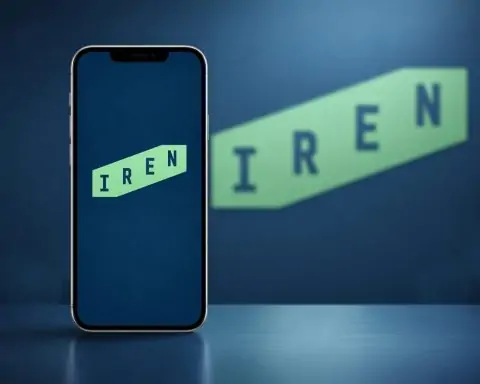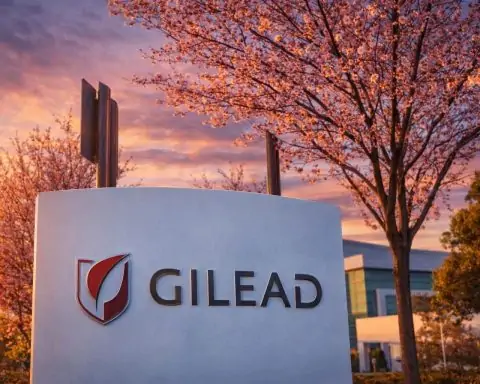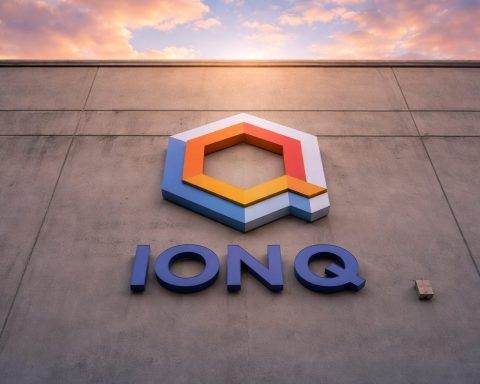Scientific Breakthroughs 🚀
- Harnessing Hybrid Systems: A New Zealand-Austria team demonstrated a novel way to control hybrid quantum systems by turning energy loss into a feature rather than a bug [1]. Operating at an exceptional point, they coherently controlled magnon-polaritons (quasiparticles of magnons + photons), as reported in Nature Physics. This “highly controllable” platform could pave the way for more efficient quantum computing, sensing and networks by preparing quantum states with less noise [2]. The researchers plan to extend the technique fully into the quantum regime, hinting at powerful new tools for future quantum tech [3].
- Proteins as Living Qubits: In a Nature paper, University of Chicago scientists showed that a common fluorescent protein can act as a working quantum bit – even inside living cells [4] [5]. The team turned enhanced yellow fluorescent protein (EYFP) into an optically addressable spin qubit, detecting its quantum state via light and microwaves in both purified samples and live mammalian and bacterial cells [6]. The protein qubit exhibited measurable coherence times (~16 µs) and could be manipulated and read out inside the noisy environment of a cell [7] [8]. While less sensitive than traditional diamond-NV sensors, this breakthrough creates a genetically encodable quantum sensor platform for nanoscale biosensing and imaging [9]. “Harnessing nature to create powerful families of quantum sensors — that’s the new direction here,” said Prof. David Awschalom, co-principal investigator, underscoring how quantum technology and biology are now converging [10].
- Stabilizing Qubits With Magnetism: A collaboration between Chalmers University (Sweden) and Aalto University (Finland) unveiled an exotic quantum material that protects fragile qubits using magnetism [11]. Published in Physical Review Letters, they engineered a material with built-in topological protections, creating robust quantum states naturally resilient to disturbances [12]. Unlike approaches that require rare spin-orbit effects, this method uses common magnetic interactions to achieve topologically protected qubit states [13]. The material maintained quantum coherence even under external noise – “a completely new type of exotic quantum material that can maintain its quantum properties when exposed to disturbances,” explained lead author Guangze Chen [14]. Along with a new computational tool to discover similar materials, this could accelerate progress toward fault-tolerant quantum computers by making qubits intrinsically error-resilient [15].
- Faster Entanglement, Stronger Security: Researchers devised new protocols to distribute multipartite entanglement across quantum networks far more efficiently, boosting fidelity by up to 45% over conventional methods [16] [17]. Instead of waiting to entangle all nodes before sharing a quantum state, the scheme (dubbed “Piecemaker”) processes each entangled pair immediately, minimizing how long fragile qubit pairs are stored [18] [19]. Simulations with up to 50 qubits showed the approach maintains high fidelity even with noisy links or low success rates, by reducing cumulative decoherence [20] [21]. Notably, this boost in entanglement quality comes without sacrificing speed. These advances – grounded in graph state techniques – mark a significant step toward practical quantum networks for ultra-secure communication and distributed quantum computing [22] [23].
Industry Updates 🏭
- IBM Bets Big on Quantum Startups: IBM is doubling down on quantum technology, putting it on “equal footing” with AI in its strategy [24]. IBM’s venture arm, led by Emily Fontaine, revealed it has made quantum computing a second pillar of focus (alongside AI) and is actively investing in the quantum ecosystem [25]. The unit has backed startups like Qedma (error mitigation software), QunaSys (quantum chemistry algorithms), and Strangeworks (quantum cloud platform) to complement IBM’s hardware roadmap [26] [27]. The goal is a self-sustaining IBM-centric quantum stack, pairing IBM’s plan for a large-scale fault-tolerant quantum computer by 2029 with robust software and algorithms [28]. “We see quantum as the next frontier for computation, it’s going to unlock enormous financial benefits,” Fontaine said, noting funding for quantum startups has surged in 2025 [29]. IBM is also forging university partnerships (e.g. Chicago’s Duality accelerator and a new National Quantum Center) to tap talent for commercial gains [30]. Major tech firms broadly are ensuring real-world quantum applications keep pace with hardware advances by pouring money into startups.
- Strangeworks Acquires Quantagonia: In a notable startup consolidation, Austin-based Strangeworks (quantum & HPC software) acquired Germany’s Quantagonia (AI/optimization software) to form a “global leader” in applied quantum computing and decision intelligence [31]. Announced August 20, the deal merges Strangeworks’ user-friendly quantum platform with Quantagonia’s hardware-agnostic optimization engine, expanding the customer reach of both [32]. The combined company – backed by investors like IBM, Hitachi, and Lightspeed – will offer enterprises a one-stop shop to solve complex scheduling, logistics, and optimization problems using classical, quantum, or hybrid methods [33]. Analysts hailed the move as a sign of a maturing industry. “Acquisitions that leverage quantum’s performance to solve real-world problems are the next milestone in the maturation of the QC sector,” said Hyperion Research analyst Bob Sorensen, noting this positions Strangeworks at the sweet spot of quantum computing and AI-driven optimization [34].
- Startup Alliances & Funding: Quantum startups continued to attract capital and partnerships. Entanglement Inc., a U.S. quantum-AI startup, struck a transatlantic deal with Austria’s Maybell Quantum to outfit Entanglement’s labs with cutting-edge dilution refrigerators and cryogenic I/O systems [35]. Under the Aug. 20 MOU, Entanglement will purchase Maybell’s ultra-cold fridge units (including for a new Vienna quantum hub) to support its R&D labs worldwide [36]. In return, Maybell gains a high-profile customer and collaborator, illustrating how specialized hardware (in this case, cryogenics for quantum devices) is in high demand. “Maybell builds the best cryogenic systems for quantum experiments and will power our labs globally,” said Entanglement CEO Jason Turner of the partnership [37]. On the funding front, Nullspace, a quantum software startup, raised a $2.5 million seed round to develop simulation tools bridging quantum computing and RF engineering [38]. And in the defense sector, Orientom (a quantum tech firm) teamed with Deep In Sight to co-develop quantum AI solutions for military applications [39] – a sign of growing interest in quantum for national security. Meanwhile, IonQ, a leading U.S. hardware firm, announced it has surpassed 1,000 total patents and patent applications in its intellectual property portfolio [40]. Two recently granted patents – one for a portable quantum memory repeater for long-distance quantum networks, and another for a self-aligning process to build 3D photonic structures in quantum devices – highlight IonQ’s focus on scaling quantum communication and fabrication tech [41]. These IP assets (bolstered by acquisitions like ID Quantique and an upcoming Oxford Ionics deal) underpin IonQ’s current systems and its ambitious goal of delivering a 2 million qubit quantum computer by 2030 [42] [43].
Policy & Government Initiatives 🏛️
- Post-Quantum Crypto Push: Governments and industry are mobilizing to guard against future quantum threats. Microsoft announced a comprehensive Quantum Safe Program to transition its products and cloud infrastructure to post-quantum cryptography (PQC) well before quantum computers can break today’s encryption [44] [45]. The roadmap aligns with U.S. federal timelines, targeting early adoption by 2029 and full deployment of quantum-proof algorithms by 2033 [46] [47]. Microsoft is already integrating NIST-selected quantum-safe algorithms into core libraries and networking protocols, and contributing to global standards (its FrodoKEM encryption scheme is under consideration as an ISO standard) [48] [49]. The company warns of the “harvest now, decrypt later” threat – that adversaries might hoard encrypted data now to decrypt it once quantum computing advances – as urgency for immediate action [50]. Microsoft’s PQC initiative, alongside U.S. government mandates for agencies to begin adopting quantum-resistant encryption, underscores a broader policy shift toward quantum-proof security this decade.
- Defense Invests in Quantum Networks: In Canada, a quantum startup has won support from the military for next-gen communications. Photonic Inc. was awarded a ${}$1 million CAD grant by Canada’s Department of National Defence under its NORAD modernization initiative [51]. The grant will help Photonic develop advanced quantum repeater and networking technology to enable secure, long-distance quantum communication – a key capability for future defense and sensing systems [52] [53]. Photonic’s novel approach uses optically linked silicon spin qubits and low-overhead error correction (qLDPC codes) to create entangled networks at telecom fiber wavelengths [54]. Dr. Stephanie Simmons, Photonic’s Chief Quantum Officer, said this selection “highlights the networking capabilities” of their architecture and advances the goal of industrializing quantum tech in Canada [55]. The NORAD-related project reflects how governments are directly funding quantum R&D to shore up strategic capabilities (in this case, North American defense communications).
- Quantum Hubs and Military Partnerships: The U.S. Air Force is similarly backing quantum innovation. Montana State University (MSU) officially launched its new QCORE (Quantum Collaborative Research and Education) center on Aug. 22 with a public open house and a three-day “Grand Challenges in Quantum Systems” summit [56] [57]. The 12,600 sq ft facility – supported by $44.7 million from the Air Force Research Lab – makes MSU the first university to host a Rigetti superconducting quantum computer on-premises (a 9-qubit “Novera” processor) [58]. QCORE also houses two photonic quantum computers (from ORCA Computing) and one of only five quantum network testbeds worldwide [59]. The center’s mission is to spur quantum R&D and workforce training in the U.S. Mountain West region [60]. “We’re leading Montana’s transformation into a global powerhouse for quantum-enabled technologies by 2035… These investments create entirely new computing and networking infrastructure for Montana,” said QCORE Director Jayne Morrow [61]. Top Air Force officials (like AFRL’s deputy director Michael Hayduk) and academic leaders keynoted the summit, underlining the national importance of building quantum capabilities beyond traditional tech hubs [62]. Across the globe, government-backed programs like QCORE signal a strategic push to expand the quantum workforce and infrastructure, ensuring broader regional participation in the quantum era.
Major Conference Highlights 🎙️
- Cryptography Conference Breakthrough: At the prestigious CRYPTO 2025 conference (held August 17–21 in Santa Barbara and online), researchers from NTT earned the Best Paper Award for a novel quantum-resistant signature scheme [63] [64]. NTT’s cryptographers Mark Zhandry and Omri Shmueli introduced one-shot signatures (OSS) – a digital signature protocol that uses quantum principles to ensure a party can sign only one unique message (preventing any duplicate contracts) [65] [66]. Their award-winning paper achieved several firsts: the first OSS system in the standard model with provable security (based on lattice Learning-With-Errors and indistinguishability obfuscation assumptions), and it resolved a decade-old open problem by separating certain classical vs. quantum security notions [67] [68]. NTT researchers in total presented 23 papers at CRYPTO (about 15% of all accepted papers) – an unprecedented contribution that included advances in post-quantum secure computation, cryptanalysis of lattice schemes like Falcon, and key management protocols [69] [70]. This dominant showing by one organization underscores the intense global efforts in post-quantum cryptography. It also highlights how academic and industry experts are collaborating at major conferences to tackle the cryptographic challenges posed by future quantum computers.
Expert Insights & Outlook 🔭
Leading experts emphasize that the quantum field’s rapid progress comes with both excitement and caution. IBM’s venture chief Emily Fontaine stresses the immense opportunity, arguing that quantum is “the next frontier for computation” with “enormous financial benefits” on the horizon, comparable to the impact of AI [71]. At the same time, academic innovators like David Awschalom highlight new cross-disciplinary directions – for instance, integrating quantum tech with living systems. “Harnessing nature to create powerful families of quantum sensors — that’s the new direction here,” Awschalom said of the University of Chicago’s quantum biology breakthrough [72]. Industry analysts note that the sector is maturing beyond lab experiments. “Acquisitions that leverage quantum’s performance to solve real-world problems are the next milestone,” observes Bob Sorensen, pointing to moves like Strangeworks–Quantagonia as signs that companies are preparing to deliver practical value [73].
Despite the strides in hardware, software, and applications seen on August 21–22, 2025, experts uniformly counsel patience and collaboration. Quantum technologies are advancing on many fronts, but turning today’s breakthroughs into widely used products will require sustained teamwork among startups and tech giants, academia and government. As one roundup noted, the key in coming years will be aligning these efforts to “turn these advances into real-world quantum solutions.” [74] The consensus: the quantum revolution is accelerating, but its ultimate success will depend on a global ecosystem working in unison to overcome the remaining scientific and engineering challenges.
Sources: The Quantum Insider [75] [76] [77] [78]; SciTechDaily [79]; Quantum Computing Report [80] [81]; South China Morning Post [82]; Quantum Zeitgeist [83]; Microsoft Blog [84]; Mirage News [85]; and more, as cited in-line.
References
1. ts2.tech, 2. ts2.tech, 3. ts2.tech, 4. thequantuminsider.com, 5. thequantuminsider.com, 6. thequantuminsider.com, 7. thequantuminsider.com, 8. thequantuminsider.com, 9. thequantuminsider.com, 10. ts2.tech, 11. ts2.tech, 12. ts2.tech, 13. ts2.tech, 14. ts2.tech, 15. ts2.tech, 16. quantumzeitgeist.com, 17. quantumzeitgeist.com, 18. quantumzeitgeist.com, 19. quantumzeitgeist.com, 20. quantumzeitgeist.com, 21. quantumzeitgeist.com, 22. quantumzeitgeist.com, 23. quantumzeitgeist.com, 24. ts2.tech, 25. ts2.tech, 26. ts2.tech, 27. thequantuminsider.com, 28. ts2.tech, 29. ts2.tech, 30. ts2.tech, 31. ts2.tech, 32. ts2.tech, 33. ts2.tech, 34. ts2.tech, 35. ts2.tech, 36. ts2.tech, 37. ts2.tech, 38. ts2.tech, 39. ts2.tech, 40. quantumzeitgeist.com, 41. quantumzeitgeist.com, 42. quantumzeitgeist.com, 43. quantumzeitgeist.com, 44. thequantuminsider.com, 45. thequantuminsider.com, 46. thequantuminsider.com, 47. thequantuminsider.com, 48. thequantuminsider.com, 49. thequantuminsider.com, 50. thequantuminsider.com, 51. quantumcomputingreport.com, 52. quantumcomputingreport.com, 53. quantumcomputingreport.com, 54. quantumcomputingreport.com, 55. quantumcomputingreport.com, 56. thequantuminsider.com, 57. thequantuminsider.com, 58. quantumcomputingreport.com, 59. quantumcomputingreport.com, 60. quantumcomputingreport.com, 61. thequantuminsider.com, 62. quantumcomputingreport.com, 63. quantumzeitgeist.com, 64. quantumzeitgeist.com, 65. quantumzeitgeist.com, 66. quantumzeitgeist.com, 67. quantumzeitgeist.com, 68. quantumzeitgeist.com, 69. quantumzeitgeist.com, 70. quantumzeitgeist.com, 71. ts2.tech, 72. ts2.tech, 73. ts2.tech, 74. ts2.tech, 75. thequantuminsider.com, 76. thequantuminsider.com, 77. thequantuminsider.com, 78. thequantuminsider.com, 79. ts2.tech, 80. quantumcomputingreport.com, 81. quantumcomputingreport.com, 82. www.scmp.com, 83. quantumzeitgeist.com, 84. thequantuminsider.com, 85. www.miragenews.com










